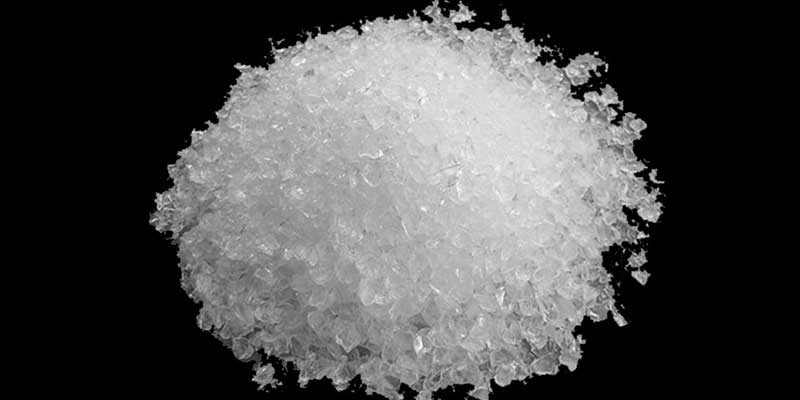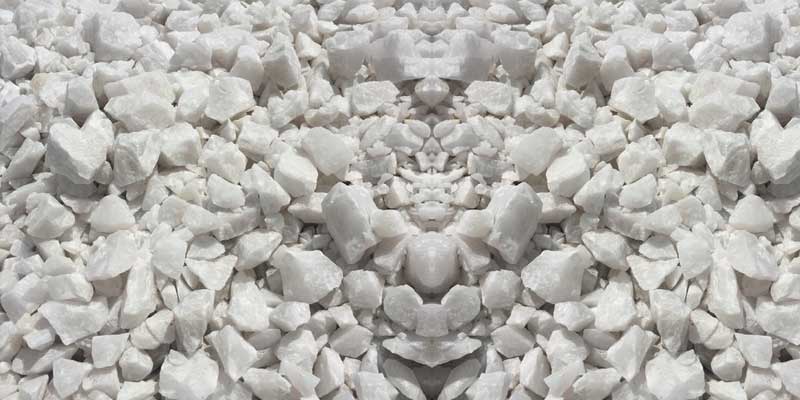Mineral Name: Quartz or Silica (SiO2)
Chemical properties:
| Moh’s hardness | Cleavage | Occurs in | Color | S.G. | Class | Chemical characteristics |
|---|---|---|---|---|---|---|
| 7 | Quartz has no cleavage. | Very common rock, glassy or translucent to transparent; very resistant to weathering. main mineral in sandstones.. | Colorless to white to pale pink | 2.65 | Silicates | Quartz is very resistant to both chemicals and heat. |
Quartz is one of the richest minerals available in the earth crust and is found in soils, rocks, and even atmospheric dust. Quartz is found in almost every geological environment. It is a common element in most of the rock types and soil groups.
Granite stone, sandstone, limestone, and most of the igneous, sedimentary, and metamorphic rocks contain silica/quartz.
Quartz/silica occurs in hydrothermal veins and pegmatite. It is chemically inert in contact with most substances.. Well-formed crystals may reach quite a few meters in length and weigh up to hundreds of kilograms.
Quartz comes in many varieties. Regular rock crystals are purple (amethyst) and dark grey smoky in colors. Masses of roughly inter-grown quartz crystals which is not well-defined. Quartz crystal also occur as white (or iron-stained) which is common in many areas or some pinkish rose quart.
Physical, chemical and optical properties:
Color of quartz is variable like spectrum. We also get some crystal clear quartz followed by white or milky quartz. The Luster quartz is glassy to vitreous as crystals, while cryptocrystalline forms are usually waxy to dull but can be vitreous. Quartz crystals are mostly transparent to translucent.
The cryptocrystalline quartz forms can be translucent or opaque. Quartz crystallizes in the trigonal Crystal System. Crystal Habits for quartz is hexagonal prisms, terminated with a six sided pyramid which looks two rhombohedrons. The Cleavage of quartz is very weak in three directions (rhombohedral). The Fracture is conchoidal and the vein is white. Striations on prism faces run perpendicular to the C axis of the crystals. Quartz is piezoelectric.
Silica quartz uses:
Quartz is very resistant to both chemicals and heat. It is therefore often used as a foundry industry. Quartz is having a melting temperature higher than most metals. Quartz is used in the Petroleum Industry as sandy slurries in oil and gas wells. Quartz sand is used as filler in the production of rubber, paint and putty. Screened and washed, carefully sized quartz grains are used as filter media and roofing granules.
It is a major constituent in glass manufacturing. Quartz sand is used in the manufacturing of container glass, flat plate glass, specialty glass and fiberglass. Quartz/Silica stone is an excellent abrasive material. Quartz sands and finely ground silica sand are used for sand blasting, polishing cleansers, grinding media, and grit for sanding and sawing. Tripoli is a crystalline silica of fine grain size is used for a variety of “mild abrasive” purposes in soaps, toothpastes, metal polishing compounds and also used in brake friction products, fillers in enamel, plastic, paint, rubber and refractories. Some varieties are used in jewelry.
We offer a Wide variety of Silica/ Quartz:
- Quartz powder 100 Mesh
- Quartz powder 300 Mesh
- Quartz powder 500 Mesh
- Quartz powder Micronized
- Quartz Gritz (30/80, 16/30, 8/16, 60/100)


